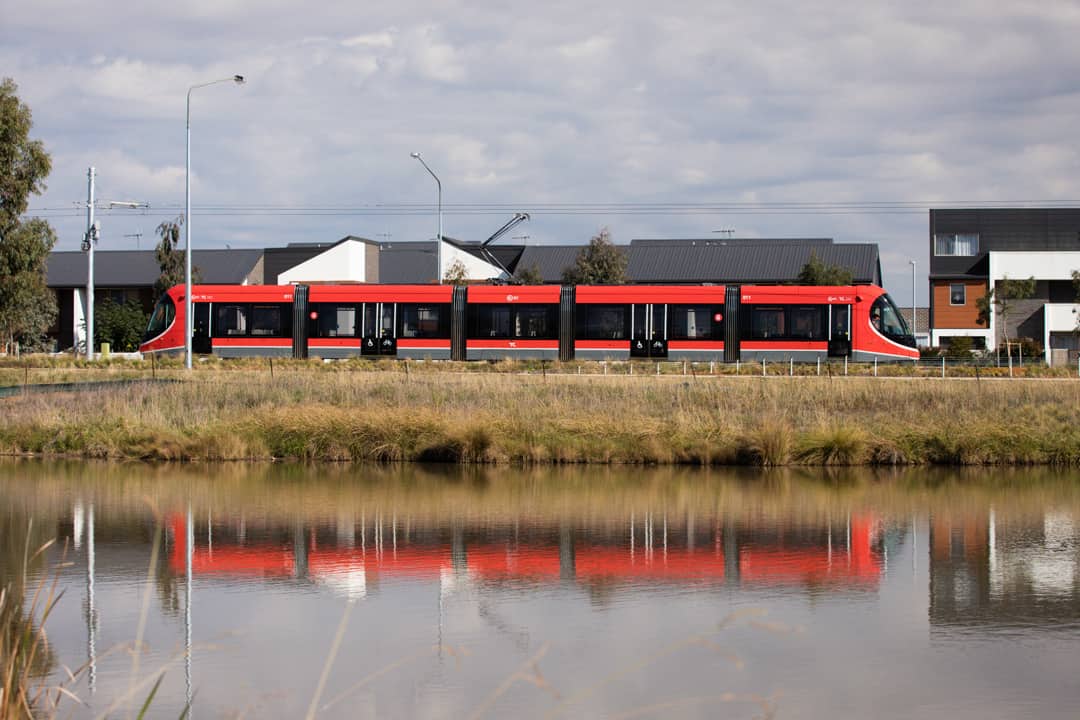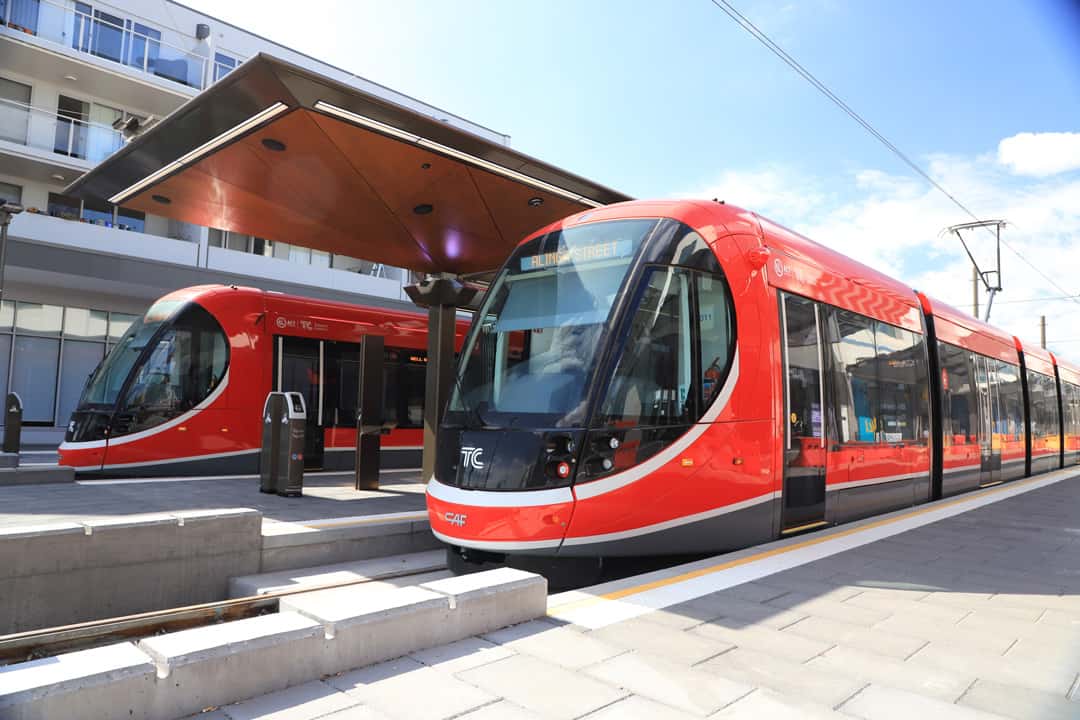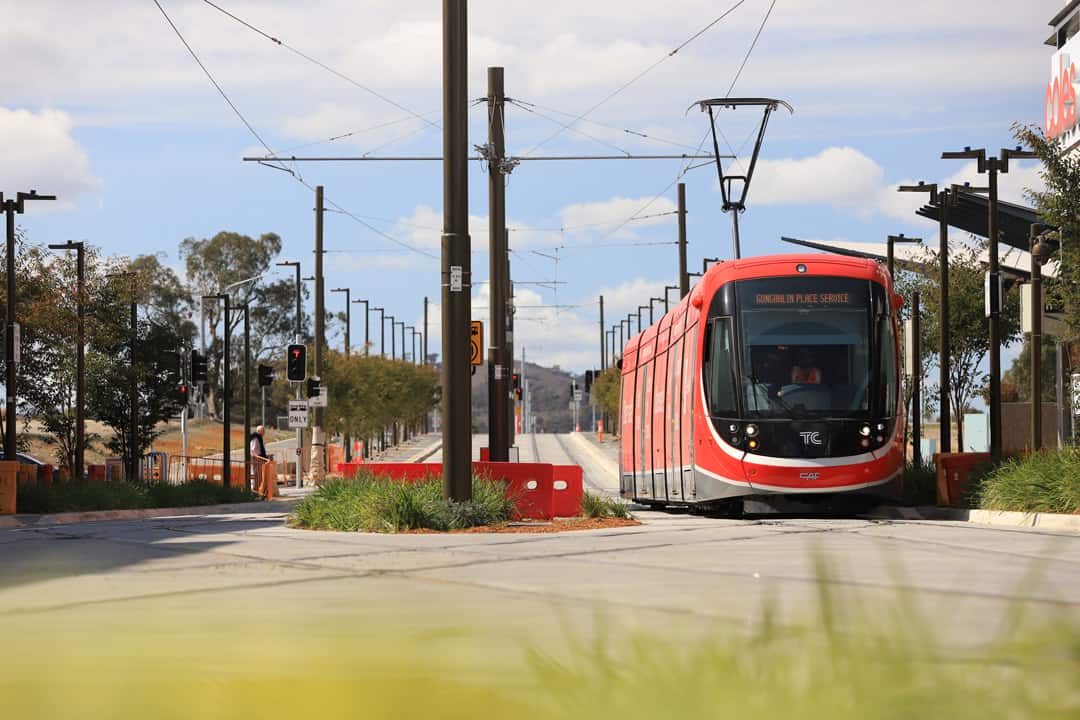The project has set a target of zero net carbon emissions in construction and operations.
This is being achieved through design initiatives like solar panels on the roof of the light rail depot, solar powered lights, and regenerative braking technology.
Any residual emissions are then offset to create a carbon neutral project.
Canberra Metro Sustainability Policy
The Canberra Light Rail project places sustainability at its core.

Did you know?
Stage One of Light Rail achieved an ISCA (Infrastructure Sustainability Council of Australia) Rating of 88 which places the project at the Leading level of sustainability– the highest ISCA rating category that can be achieved. Stage One is just the 7th infrastructure project in Australia to be rated at a Leading level by ISCA. Canberra Metro intends to further increase that score during operations of the light rail network.Key sustainability features

100 per cent of the electricity needed to power the light rail vehicles as well as the maintenance and administration buildings is renewable energy.

Rainwater is harvested from the track and re-used to water the trees and plants along the 12 km route.

The project has substantially reduced the volume of concrete and steel required in the construction of the track slab through the use of a fibreglass reinforcing material, rather than traditional steel reinforcement. Glass fibre reinforcing is one quarter of the weight of steel with double the tensile strength.

Canberra’s light rail vehicles meet the most demanding eco-design requirements with lightweight, eco-friendly materials, and subsequent end-of-life recycling of materials.

Canberra’s light rail system is the first in Australia to have dedicated spaces for bicycles on board each light rail vehicle.



